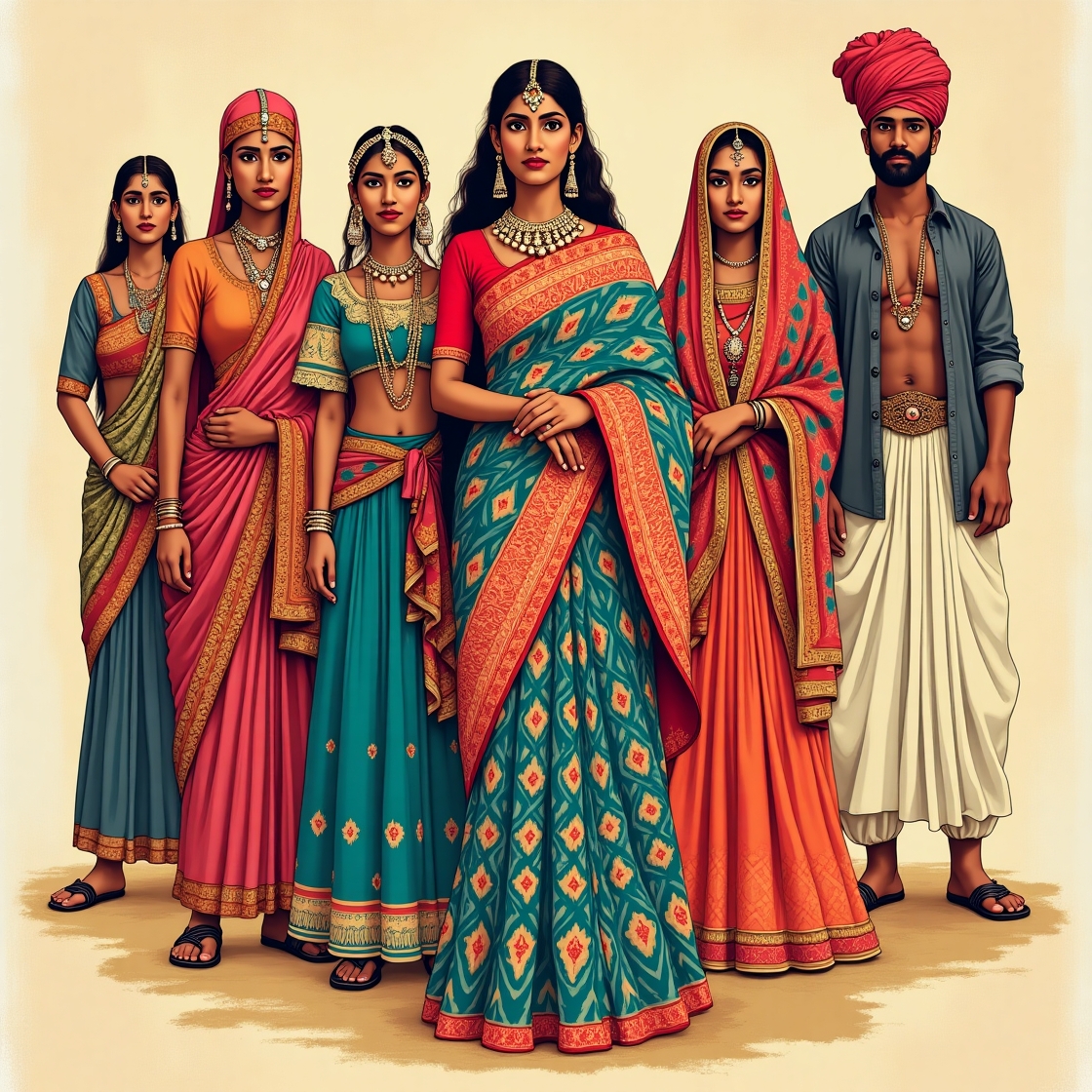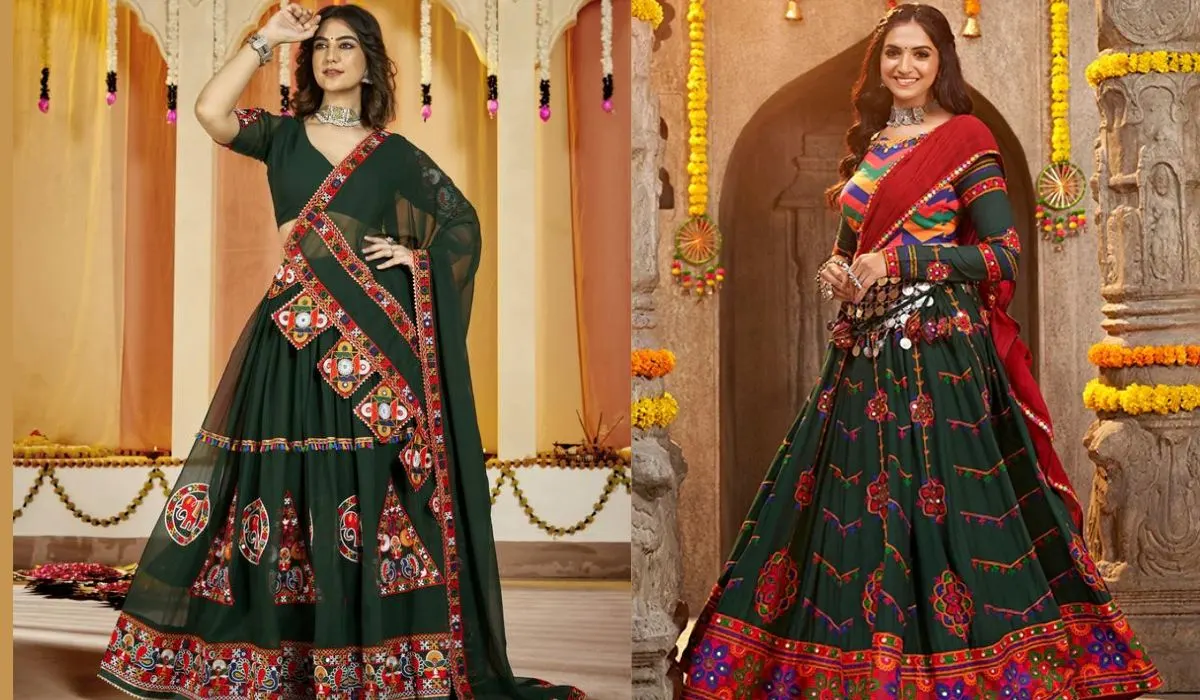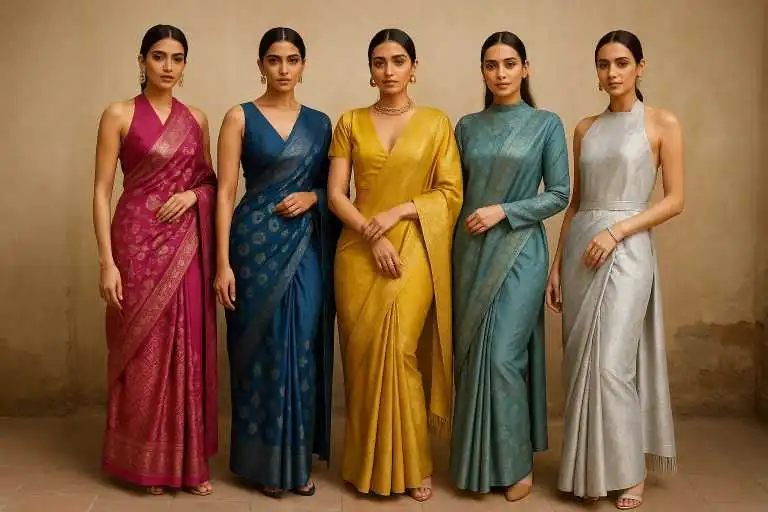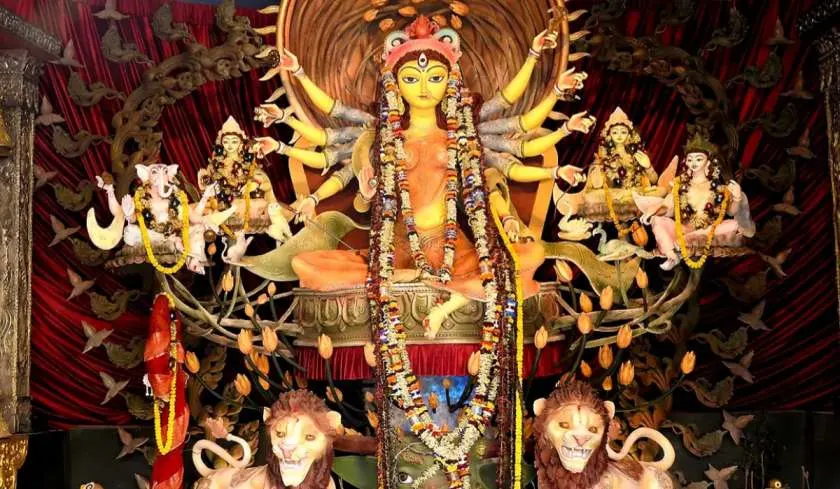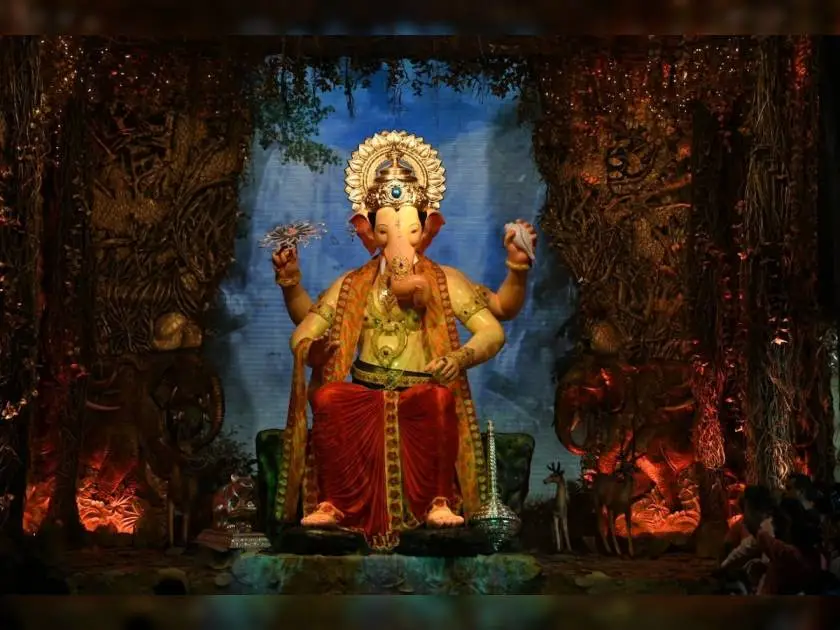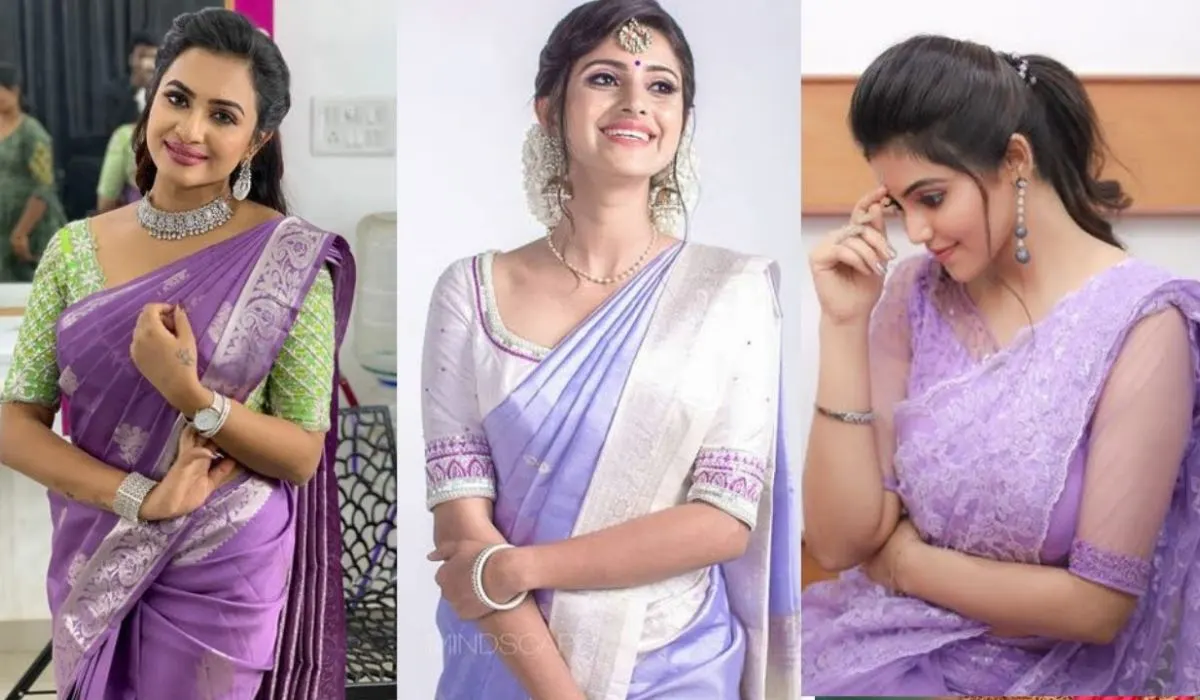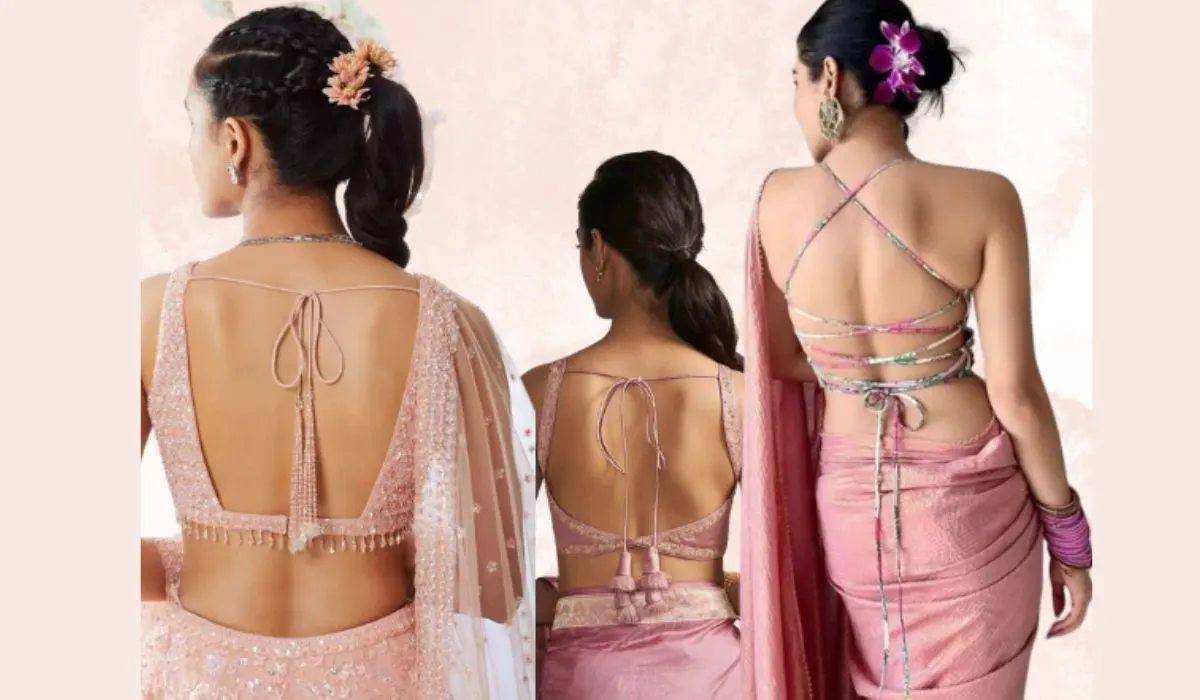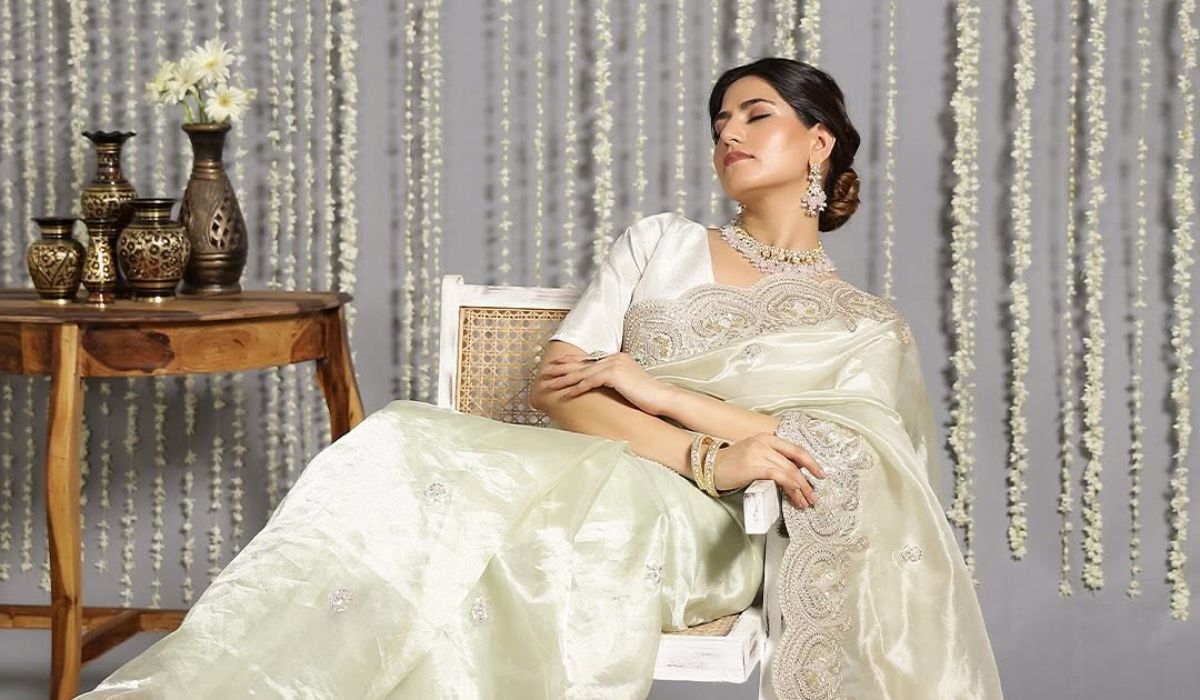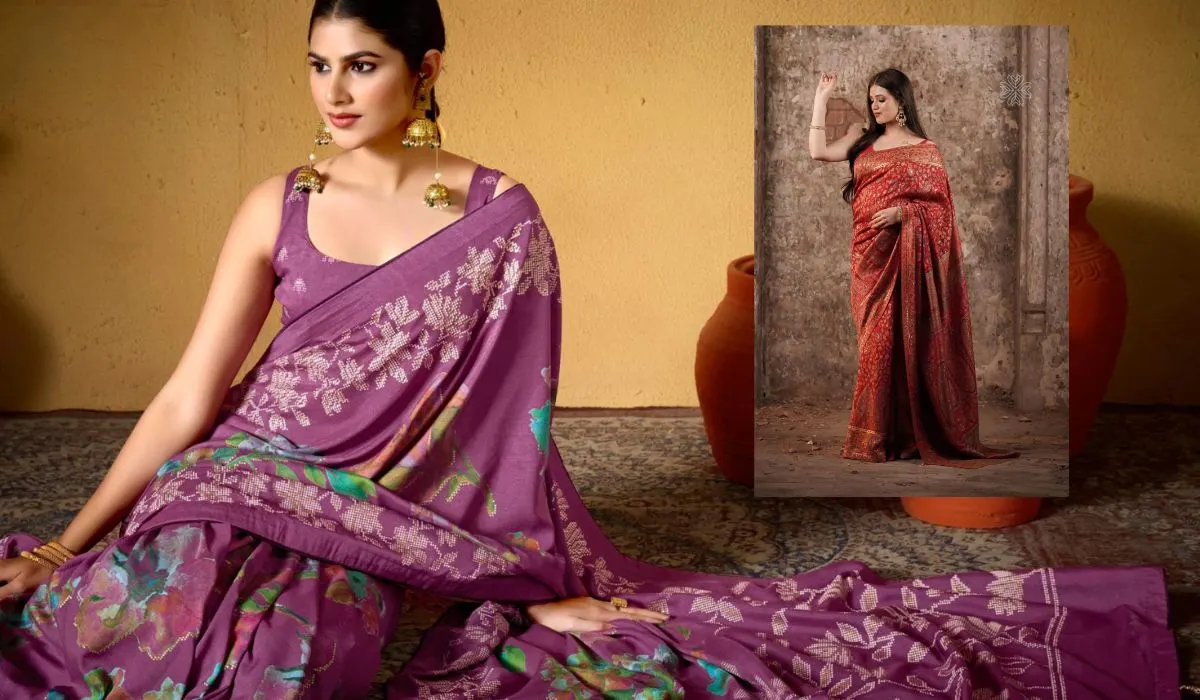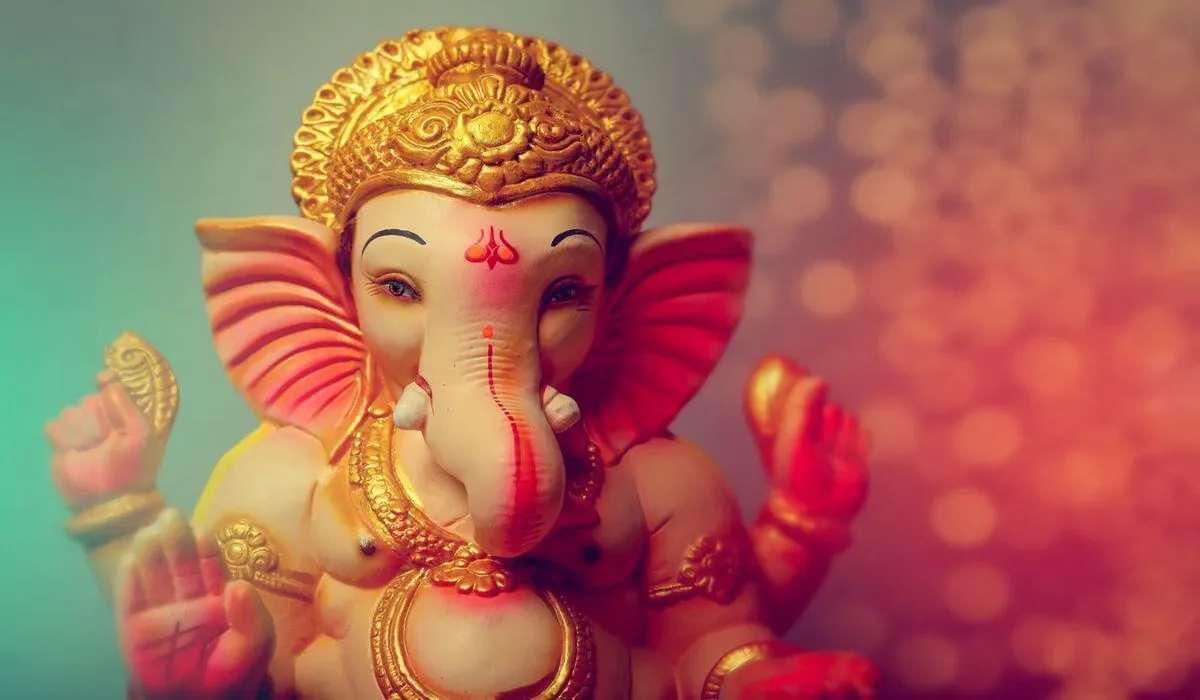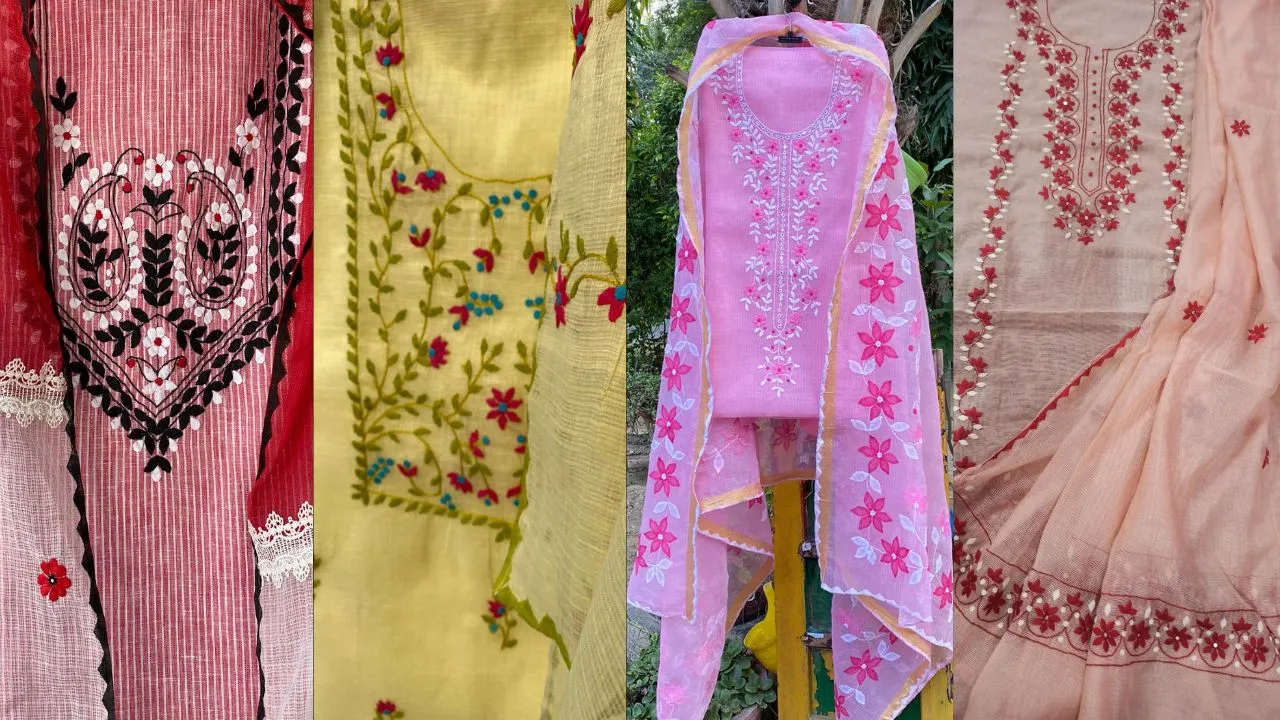India’s cultural diversity is unmatched—and one of the most vibrant reflections of this diversity lies in its traditional attire. Every state, region, and community brings forth a distinctive style of clothing that tells stories of history, climate, occupation, and art forms. From the silk sarees of the South to the phirans of Kashmir, the country’s wardrobe is nothing short of a cultural kaleidoscope.

In this blog, we explore the regional attire of India, how it has evolved, and what it represents in the rich tapestry of Indian identity.
1. Why Regional Attire Matters
Clothing in India is far more than a practical or aesthetic choice—it’s an expression of identity, heritage, and belonging. Regional attire:
-
Reflects local climates and geographies (e.g., wool in Ladakh, cotton in Gujarat).
-
Tells stories of ancient traditions, festivals, and rituals.
-
Highlights local craftsmanship, such as embroidery, weaving, and dyeing.
-
Varies based on religion, caste, tribe, and even profession.
2. North India: Royal Silhouettes & Earthy Elegance
???? Jammu & Kashmir: Pheran and Pathani Suits
-
Women wear pherans—long, loose woolen garments often embroidered with Kashida.
-
Men wear pathani suits or traditional pherans with a waistcoat.
-
Accessories: Kashmiri shawls, Pashmina scarves, and tarang (bridal headgear).
Punjab: Patiala Suits and Phulkari
-
Salwar kameez with a short kameez and flared Patiala salwar.
-
Phulkari embroidery (floral threadwork) adds color and life.
-
Men: Kurta-pyjama with turban; for special occasions, they wear achkan or sherwani.
Uttarakhand & Himachal Pradesh: Woolen Wraps and Tunics
-
Heavy woolen garments due to cold weather.
-
Colorful capas, embroidered jackets, and traditional headgear are worn.
-
Himachali caps are iconic symbols of regional identity.
-

3. West India: Vibrancy in Weave and Color
Rajasthan: Ghagra Choli and Bandhani
-
Women wear ghagra-choli with odhani (veil), often in bright colors and mirror work.
-
Bandhani (tie-dye) is a signature fabric art.
-
Men sport angrakhas, dhotis, and turbans like safa or pagri.
Gujarat: Chaniya Choli and Kediyu
-
Chaniya choli worn by women during Navratri features mirror and thread work.
-
Men wear kediyu (frilled top) and dhoti or chorno.
-
Embellished with beadwork, shells, and patchwork.
Maharashtra: Nauvari Saree and Dhotar
-
Nauvari saree (9-yard drape) allows ease of movement; worn like trousers.
-
Paired with choli and nath (nose ring).
-
Men wear dhotar and pheta (head turban) or bandi.
4. South India: Grace in Simplicity and Silk
Tamil Nadu: Kanjeevaram Sarees and Veshti
-
Women wear kanjeevaram silk sarees with gold borders for special occasions.
-
Everyday wear includes cotton sarees or half sarees for young girls.
-
Men wear veshti (dhoti) and angavastram (shoulder cloth).
Kerala: Kasavu Saree and Mundu
-
Traditional white or off-white Kasavu saree with golden zari border.
-
Worn during Onam, Vishu, and weddings.
-
Men wear mundu (a type of dhoti), often paired with shirts or angavastram.
Andhra Pradesh & Telangana: Ikkat and Pochampally
-
Sarees in pochampally ikkat and gadwal styles are traditional.
-
Women also wear langavoni (half saree) during festivals.
-
Men wear panche (dhoti) and kurtas or shirts.
Karnataka: Ilkal Sarees and Angavastra
-
Ilkal and Mysore silk sarees are popular.
-
Bright borders and unique pallu weaving.
-
Men wear panche and shirts or kurta with angavastram.
5. East India: Textiles with Deep Heritage
West Bengal: White and Red Saree
-
Worn especially during Durga Puja.
-
Tant, Baluchari, and Jamdani are celebrated handloom varieties.
-
Men wear dhuti (dhoti) and panjabi (kurta).
Odisha: Sambalpuri Sarees and Dhoti-Kurta
-
Sambalpuri ikat sarees with bold motifs and borders.
-
Traditional attire includes sarees and shakha pola (white and red bangles).
-
Men wear dhoti and kurta during religious functions.
Bihar & Jharkhand: Tussar Silk and Local Weaves
-
Women wear tussar silk sarees or khes.
-
Madhubani-inspired sarees are gaining popularity.
-
Men wear kurta-dhoti with a gamcha (towel/scarf).
6. Northeast India: Weaves of Identity
The Northeast is home to myriad tribes, each with a distinct style of dressing.
Assam: Mekhela Chador
-
Two-piece traditional dress—mekhela (bottom) and chador (upper drape).
-
Often made in muga silk, a golden-hued silk unique to Assam.
Nagaland: Warrior Shawls and Wraps
-
Tribal patterns and warrior shawls represent clan identity.
-
Women wear wrap-around skirts (mekhela-style) and shawls.
Manipur: Phanek and Innaphi
-
Phanek is a wrap-around skirt with a blouse.
-
Innaphi is a delicate dupatta worn over the shoulder.
Meghalaya: Jainsem and Dhara
-
Khasi women wear jainsem, a two-piece cloth pinned at the shoulders.
-
In Garo and Jaintia tribes, women wear dhara with elaborate silver jewelry.
7. Central India: Tribal Richness & Simplicity
Madhya Pradesh: Lehenga-Choli and Lugda
-
Tribal communities like Bhil and Gond wear colorful lugdas (wrap-around sarees).
-
Men wear angarkhas, dhotis, and turbans.
Chhattisgarh: Kachhora Saree and Baiga Jewelry
-
Women wear kachhora saree (tied in a unique backward style).
-
Known for dokhra jewelry and bamboo accessories.
-
Men wear short dhotis and turbans.
8. Goa & Western Coastal Styles: Portuguese Influence Meets Indian Tradition
-
Women wear nav-vari sarees or pano bhaju (blouse and draped lower cloth).
-
Catholic influence visible in floral prints and dresses during festivals.
-
Men wear lungis, cotton shirts, and Konkani headscarves.
9. Common Themes Across Regions
While regional outfits differ vastly, certain threads connect them all:
-
Handloom and Handcraft traditions are central.
-
Jewelry (bangles, earrings, anklets) complements regional attire.
-
Sustainable and natural fabrics like cotton, silk, and wool are widely used.
-
Festivals and rituals dictate special dress codes.
10. Modern Evolution: Fusion with Tradition
Contemporary Indian designers are reinventing regional wear:
-
Sarees with crop tops, dhotis with jackets, and lehenga-sneaker combos are gaining ground.
-
Urban youth are embracing regional textiles in modern silhouettes.
-
Films, Instagram, and celebrity weddings are playing key roles in reviving traditional styles.
Conclusion: The Fabric of India's Diversity
India’s regional attire is not just clothing—it’s a living expression of cultural history. Each thread, motif, and silhouette holds centuries of meaning, making every outfit more than just a fashion choice. Whether you’re rediscovering your roots or exploring another region’s culture, regional attire is a beautiful and respectful way to celebrate India’s timeless traditions.



